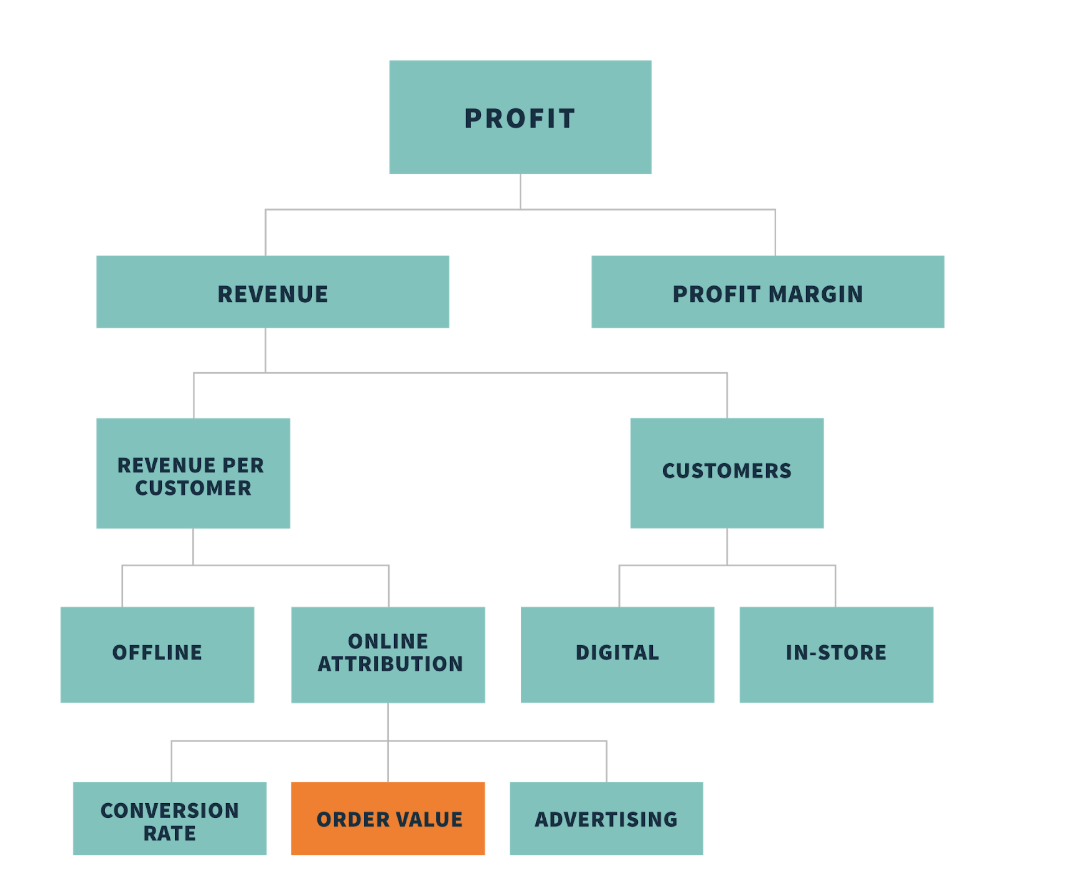Charting Success in Personalization With Goal Mapping
Charting Success in Personalization With Goal Mapping
Annie Stone | Director of Marketing Services
February 24, 2020
With all the buzz around personalization, it’s hard resisting the urge to just get started.
While there’s some merit to a ‘bias toward action’, in order to get a true return on your investment it's important to always define what business goal your personalization strategy is working towards and stick to it!
The problem is, with business goals that vary from stakeholder to stakeholder, how do you know which goal to focus your personalization strategy around?
You Have To Prioritize First
As I mentioned in my previous blog, the start of a personalization program is a great time to re-evaluate your business’s KPI model with a goal mapping exercise. The aim is to gain consensus on the outcomes and metrics that will deliver the biggest impact to your top level business goals. Goal mapping ensures that all stakeholders understand how their individual department or team success metrics impact the highest level business goals. And it will help you determine which metrics would be best to optimize with personalization.
If this sounds like basic communication and strategy work, that’s because it is. However, prioritizing and aligning around goals for a personalization program is harder than it sounds.
For example, take demand generation vs lead generation. If you ask your stakeholders, I’m sure they will tell you that both are crucial... and of course they are. They are indeed both important metrics of success, and both need solid strategies, but only one should be the focus of your first personalization campaign.
Too often, we find that clients will inadvertently sabotage their personalization efforts by trying to optimize too many KPIs at once. There’s nothing wrong with aiming high, but we recommend starting by focusing on one goal that will produce a quick win and impact the bottom line. Strategies that effectively impact multiple facets of a business require a level of complexity and data (and team alignment) that you very likely won’t have when you’re starting out.
If you can build your strategy from a solid understanding of the priority of your goals, then the rest of your strategy will start to fall into place.
Goal mapping empowers you to make data-driven decisions about your personalization strategy from the beginning which will help you drive an ROI for your efforts.
Getting the Order Right
So, how do you prioritize goals that seem equally important?
The answer will be determined once you map out your goals, and the metrics that roll up to them. Where are there opportunities for improvement? Do you need to focus on brand awareness and demand generation metrics? Maybe you have a high volume of traffic and a decent subscriber base, but need to optimize your lead generation?
A goal mapping exercise can help you prioritize your goals, as well as identify the metrics that are best to optimize with your personalization strategy.
At Phase2, a typical goal mapping exercise looks something like this:
- Make sure the right stakeholders are in the room
- Keep the mapping to goals, don’t skip ahead and start talking strategy or tactics
- Don’t get caught up in how you will measure the metrics, just get them all accounted for
- Make sure everyone is using the same language to describe your business funnel and metric definitions
- Don’t leave the room until you have a consensus on priority
- Pick a metric to start with that is both impactful and that can be influenced with digital personalization
In the example below, you can see the beginning of a goal mapping exercise for a retail brand. Once you have all the metrics mapped out, you can identify a personalization success metric. In this example, once the numbers were plugged in, it was clear that the quickest win that would impact the bottom line would be optimizing the order value. So the personalization strategy would focus on increasing average order value.

After you have identified the success metric your personalization campaign will focus on, you’ll be able to develop strategies and tactics to create meaningful experiments and personalization campaigns that drive results!


